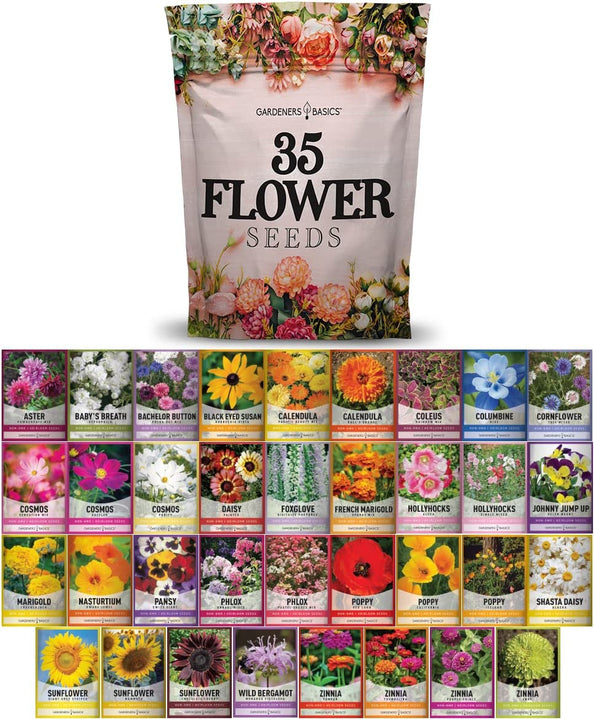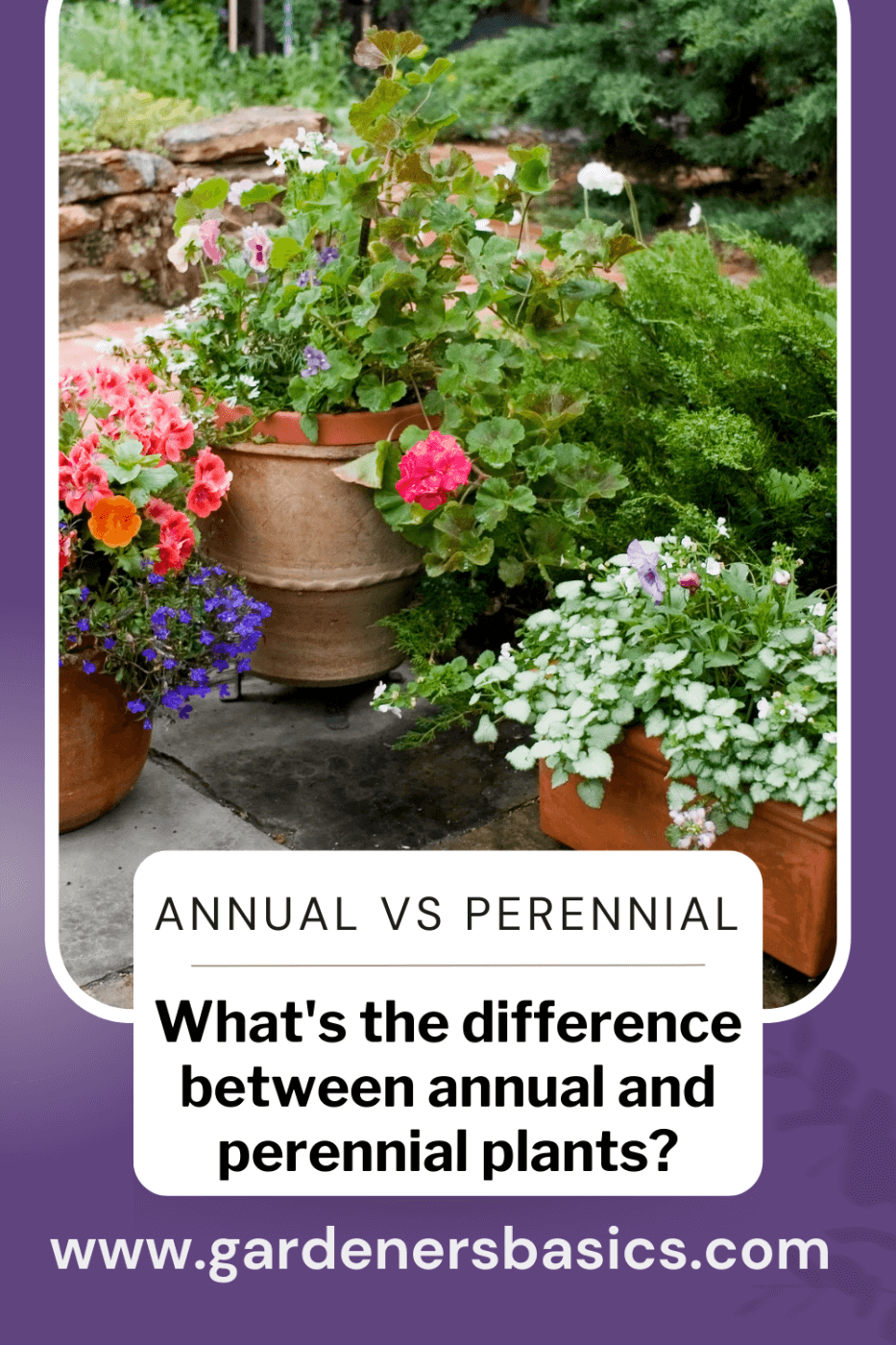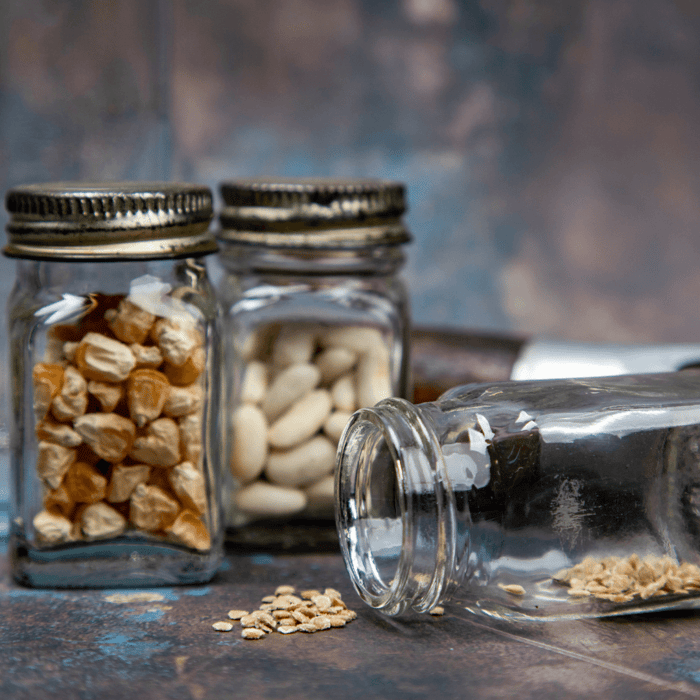Hello, fellow gardeners! I'm a passionate gardener, and today, I want to share my knowledge on a topic that can be a bit confusing for beginners: the difference between annual and perennial plants. In this in-depth guide, we'll explore these differences, discuss the benefits and drawbacks of each, and provide tips for selecting the best plants for your garden. Let's take a look at annual vs. perennial plants and seeds.
By the end of this article, you'll have a solid understanding of the differences between annual and perennial plants and be well-equipped to make informed decisions about your garden. So, let's get started so you can understand what's the difference between annuals and perennials!
1. Understanding Plant Life Cycles of annual vs. perennial
Before diving into the differences between annuals and perennials, it's essential to understand the life cycles of flowering plants. The life cycle of a plant refers to the time it takes for a plant to grow from seed, flower, set seed, and eventually die. There are three primary types of plant life cycles: annual, biennial, and perennial.
Annual Plants
Annual plants complete their entire life cycle in just one growing season. They grow from a seed packet, flower, set seed, and die within the same year. Examples of annual flowers include marigolds, petunias, and zinnias.
Biennial Plants
Biennial plants have a two-year life cycle. In their first year, they grow foliage and store energy but don't bloom until the second year. After flowering and setting seeds, biennial plants die. Examples of biennial plants include foxgloves, hollyhocks, and some types of parsley.
Wildflower, Perennial, & Annual Flower Seed Kit | 35 Variety Pack

$29.95
$49.95
35 Flower Seeds Variety Pack – Heirloom, Non-Hybrid, Non-GMO, Open-Pollinated – Perfect for Pollinator-Friendly Gardens Transform your garden with our 35 Flower Seeds Variety Pack, offering a stunning and diverse selection of heirloom, non-hybrid, and non-GMO seeds. Each variety in… read more
Perennial Plants
Perennial plants return year after year, often with a shorter blooming period than annuals. They typically have a more extended root system, allowing them to survive harsh weather conditions and regrow each spring. Examples of perennial flowers include daylilies, hostas, and peonies.
2. Planting Annuals: A Burst of Color for One Season
Annual flowers are known for their vibrant colors and extended bloom time, making them a popular choice for gardeners looking to add a splash of color to their gardens. Here are some benefits and drawbacks of planting annuals:
Benefits of Annuals
- Extended bloom time: Annual flowers often bloom for a more extended period than perennials, providing continuous color throughout the growing season.
- Versatility: Annuals are available in various colors, shapes, and sizes, allowing gardeners to experiment with combinations yearly.
- Low maintenance: Many annuals are relatively low maintenance and require minimal care, making them an excellent choice for novice gardeners.
Drawbacks of Annuals
- Shorter life span: Annuals must be replanted yearly, which can be more labor-intensive and costly than planting perennials.
- Less hardy: Some annuals are less tolerant of temperature fluctuations, making them more susceptible to frost or heat damage.
3. Planting Perennials: Long-Term Beauty and Stability
Perennial plants can add structure and stability to your seed garden as they return and grow larger yearly. Here are some benefits and drawbacks of planting perennials:
Benefits of Perennials
- Longer life span: Perennials live for several years, meaning you won't need to replant them yearly.
- Low maintenance: Once established, many perennials require little care beyond watering and occasional pruning.
- Eco-friendly: Perennial plants are often more drought-tolerant and pest-resistant than annuals, making them a more environmentally friendly option.
Drawbacks of Perennials
- Shorter bloom time: Perennial flowers
- Shorter bloom time: Perennial flowers generally have a shorter blooming period than annuals, which means they may not provide continuous color throughout the growing season.
- Initial cost: Perennials can be more expensive initially, but they often pay off in the long term due to their longevity.
4. Choosing the Right Plants for Your Garden: Sunlight and Soil Requirements
When selecting plants for your garden, it's crucial to consider each plant's sunlight and soil requirements. Some plants thrive in full sun, while others prefer partial shade. Similarly, some plants prefer well-draining soil, while others can tolerate more moisture.
Full Sun Plants
Both annual and perennial plants can thrive in full sun, requiring at least six hours of direct sunlight daily. Some examples of full-sun annuals include sunflowers, zinnias, and marigolds, while full-sun perennials include daylilies, coneflowers, and lavender.
Partial Shade and Shade Plants
Partial shade plants prefer three to six hours of sunlight daily, while shade plants can thrive with less than three hours. Some examples of annuals suitable for partial shade or shade include impatiens, begonias, and coleus. Perennials that grow well in partial shade or shade include hostas, ferns, and astilbe.
5. Heirloom Seeds and Open-Pollinated Plants
Heirloom seeds and open-pollinated plants are popular among gardeners for their unique characteristics, historical significance, and ability to save seeds from one year to the next. Heirloom or heritage seeds are typically older varieties of plants passed down through generations. In contrast, open-pollinated plants can be pollinated by insects, birds, or wind, resulting in seeds that produce similar offspring to the parent plant.
Both annual and perennial plants can be heirloom or open-pollinated, and these plants often offer more variety in terms of colors, shapes, and flavors than hybrid varieties. Some examples of heirloom annuals include heirloom tomatoes, snapdragons, and sweet peas, while heirloom perennials include heirloom roses, peonies, and irises.
6. Getting Started: Early Spring Planting Tips
When it comes to planting in early spring, there are some tips and tricks to help ensure your garden gets off to a great start:
- Start seeds indoors: Starting seeds indoors allows you to get a head start on the growing season, particularly for annuals with a longer time to maturity.
- Harden off seedlings: Gradually expose seedlings to outdoor conditions before transplanting them to avoid shock and improve their chances of survival.
- Prepare your soil: Amend it with organic matter, such as compost or well-rotted manure, to improve its structure and fertility.
- Plant at the right time: Pay attention to the recommended planting times for each plant, as planting too early or late can negatively affect growth and flowering.
7. Creating a Balanced Garden: Mixing Annuals and Perennials
For a well-rounded garden, consider incorporating a mix of annuals and perennials. This approach provides the best of both worlds, offering continuous color from annuals and long-lasting structure from perennials. Here are some ideas for creating a balanced garden:
- Use annuals as fillers: Plant annuals between perennials to fill gaps and provide continuous color as perennials go in and out of bloom.
- Group plants with similar needs: Plant annuals and perennials with similar sunlight and water requirements together to simplify maintenance.
- Layer plants for visual interest: Arrange plants in layers, with taller plants in the back and shorter plants in the front, to create depth and visual interest in your garden.
- Experiment with color and texture: Combine plants with different colors, shapes, and textures to create a dynamic and visually appealing garden.
- Consider seasonal interest: Choose a mix of plants with different bloom times to ensure your garden remains colorful and interesting throughout the growing season.
Vegetable Seed Vault Kit | 35 Variety Pack

$29.95
$49.95
Ultimate Survival Seed Vault: 16,000+ Non-GMO Heirloom Vegetable Seeds for Emergency Preparedness Introducing the Seed Vault Kit, your all-in-one solution for emergency preparedness and sustainable gardening. This premium seed kit contains over 16,000 non-GMO, Heirloom, Non-Hybrid, and Open Pollinated seeds,… read more
8. Caring for Your Garden: Maintenance Tips for Annuals and Perennials
Proper care and maintenance are essential for keeping your garden healthy and vibrant. Here are some general maintenance tips for both annuals and perennials:
- Watering: Ensure your plants receive adequate water, particularly during dry spells. However, be careful not to overwater, as this can lead to root rot and other issues.
- Fertilizing: Apply a balanced, slow-release fertilizer to your garden to promote healthy growth and flowering. Be sure to follow the manufacturer's instructions for proper application rates.
- Deadheading: Remove spent flowers from annuals and perennials to encourage continuous blooming and prevent the plant from going to seed.
- Pruning: Regularly prune perennials to maintain their shape, encourage new growth, and remove dead or diseased plant material.
- Mulching: Apply a layer of organic mulch around your plants to help retain moisture, suppress weeds, and regulate soil temperature.
In conclusion, understanding the differences between annual and perennial plants is essential for creating a beautiful, balanced garden. You can decide which plants to incorporate into your garden by considering the life cycle, sunlight and soil requirements, and maintenance needs. Remember that a mix of annuals and perennials can provide the most visual interest and enjoyment throughout the growing season.
Happy gardening, and enjoy the fruits of your labor as you watch your garden flourish!
 Frequently Asked Questions (FAQ) - Annual vs. Perennial
Frequently Asked Questions (FAQ) - Annual vs. Perennial
Q1: What is the main difference between annual and perennial plants?
A1: The primary difference between annual and perennial plants is their life cycles. Annual plants complete their life cycle within a single growing season, while perennial plants return year after year and have a longer life span.
Q2: How do I know if a plant is annual or perennial?
A2: You can typically find information about a plant's life cycle on its seed packet or plant tag. Additionally, you can research specific plants in gardening books or online resources to determine if they are annuals or perennials.
Q3: Can I grow both annuals and perennials in my garden?
A3: Absolutely! Incorporating a mix of annuals and perennials in your garden can provide continuous color and interest throughout the growing season and a stable structure and stability.
Q4: What are some examples of popular annual flowers?
A4: Some popular annual flowers include marigolds, petunias, zinnias, sunflowers, and impatiens.
Q5: What are some examples of popular perennial flowers?
A5: Some popular perennial flowers include daylilies, hostas, peonies, coneflowers, and lavender.
Q6: How do I care for annual and perennial plants?
A6: Basic care for annuals and perennials includes providing adequate water, applying a balanced fertilizer, deadheading spent flowers, pruning when necessary, and mulching to retain moisture and suppress weeds.
Q7: What are heirloom seeds and open-pollinated plants?
A7: Heirloom seeds are older varieties of plants that have been passed down through generations, while open-pollinated plants are those that can be pollinated by insects, birds, or wind, resulting in seeds that produce offspring similar to the parent plant. Both heirloom and open-pollinated plants offer more variety in colors, shapes, and flavors than hybrid varieties.
Q8: What is a biennial plant?
A8: Biennial plants have a two-year life cycle. In their first year, they grow foliage and store energy but don't bloom until the second year. After flowering and setting seeds, biennial plants die. Examples of biennial plants include foxgloves, hollyhocks, and some types of parsley.







